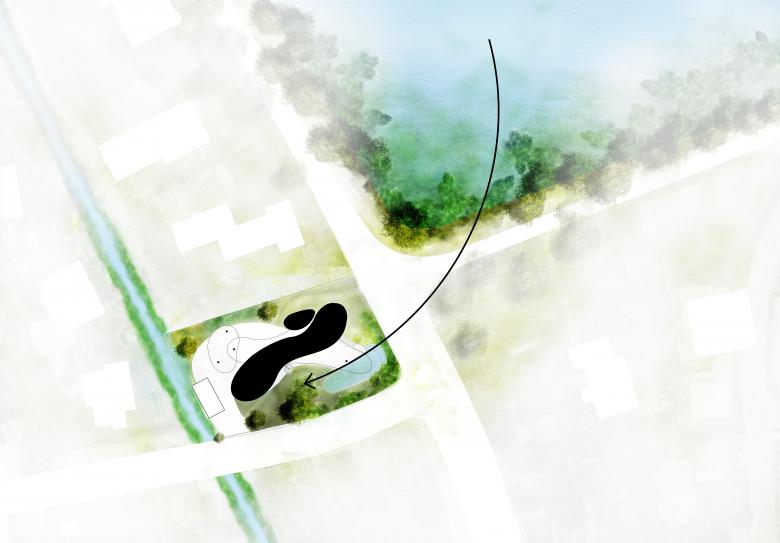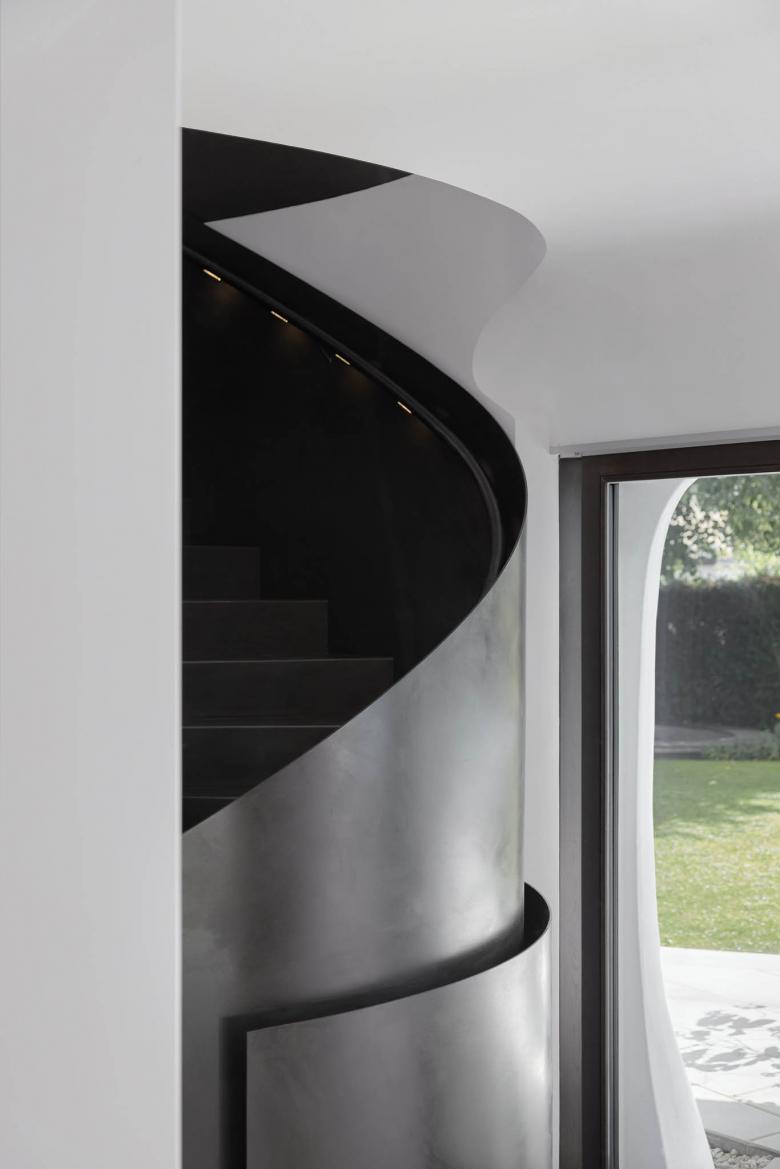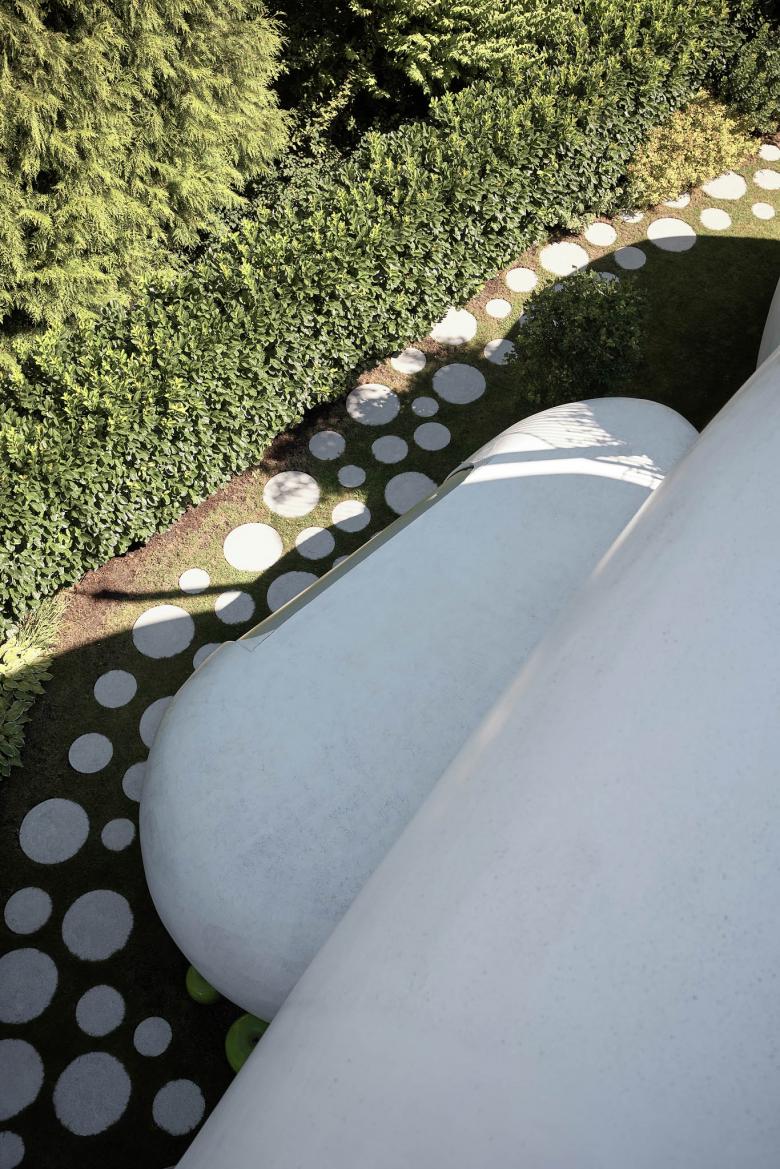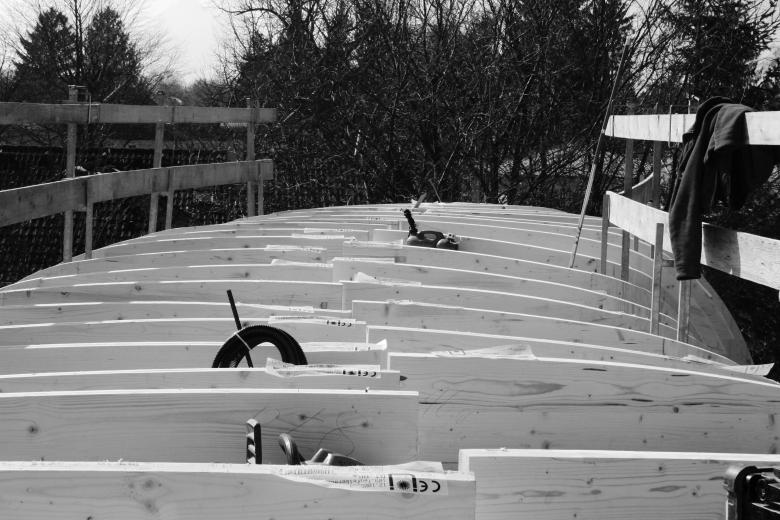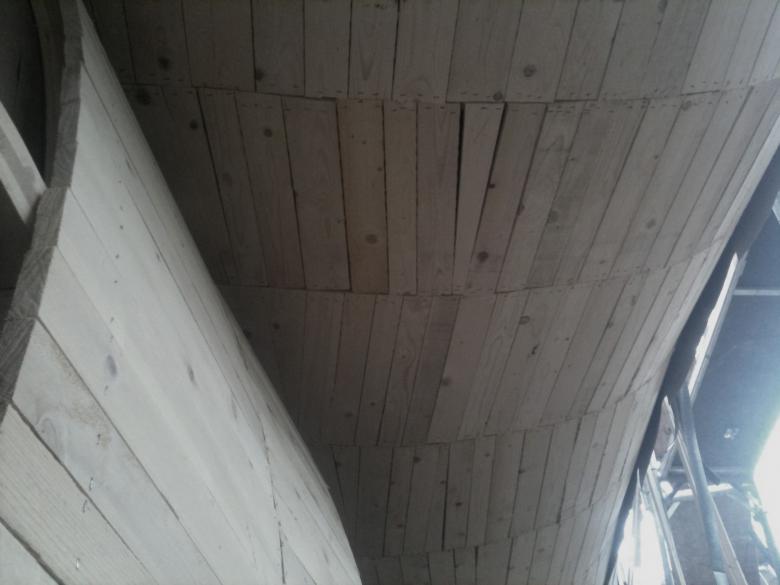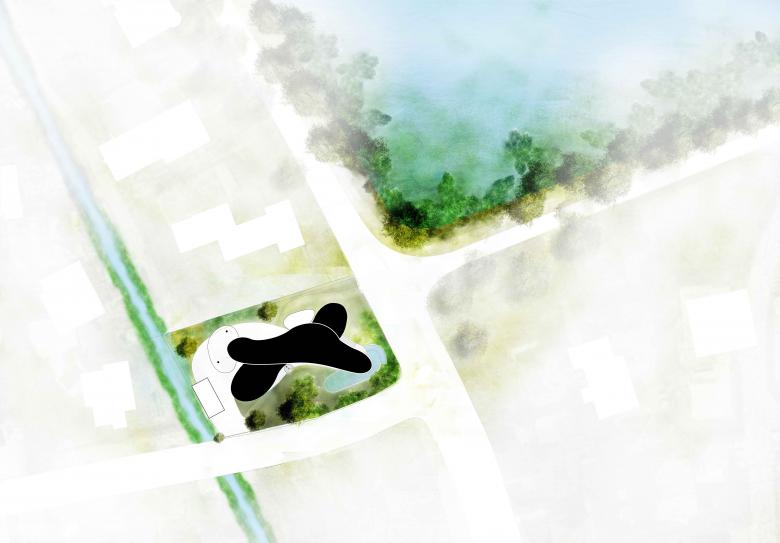Amorph Livingsculpture
Salzburg, Austria
The Living Sculpture, a residential project located in the picturesque city of Salzburg, Austria, represents a harmonious blend of architectural form and natural beauty. The project's primary objective is to visually integrate the living spaces within the surrounding environment, drawing inspiration from the natural splendor of the area and capitalizing on strategic visual relationships with iconic landmarks such as the Leopoldkron Castle, the Leopoldskorner pond, the fortress Hohensalzburg, and the Untersberg. The project's free-form floor plan and three-dimensional building shape are specifically crafted to optimize these lines of sight, while the unique exterior design seamlessly connects the interior spaces with nature.
The final outcome of the project was the creation of two slender, offset structures with a central aperture. The entrance on the ground floor is defined by the structure of the ancillary facility and the main building, creating a narrowing of the space. The slender design of the ground floor opens up a panoramic view of the garden, complete with its associated water feature and a sculptural staircase, adding an element of artistry to the architectural design. The interplay of these elements creates an inviting and dynamic entrance experience that sets the tone for the entire development.
The design of the ground floor spaces seamlessly integrates with the surrounding natural environment through its form. The spaces evoke a sense of warmth and comfort, reminiscent of a hobbit cave. The focal points of the visual landscape include the private garden, the Leopoldkroner pond, and the majestic Untersberg mountain range. These elements serve as key reference points and are incorporated into the architectural design to create a harmonious connection between the built and natural environments.
The architectural design of the outdoor space blends with the natural surroundings, with the water-feature prominently aligned towards the Leopoldkroner pond and elevated to connect with the existing terrain. The exterior spiral staircase allows for easy access to the residential sculpture, which is further emphasized through the use of shape and vegetation, blending the structure with the surrounding landscape.
The design of the first floor incorporates a strong connection to the exterior, through the integration of two expansive terraces. The terraces are strategically located on opposite sides of the living area, one facing the Leopoldskroner pond, fortress Hohensalzburg, and Schloss Leopoldskron, providing expansive views and the other oriented towards the private sphere, promoting a sense of seclusion. The living sculpture is designed to be accessed through a circular route, utilizing the two vertical openings inside and outside, creating an immersive and interactive experience.
The construction of this architectural project employed the use of timber frame construction method, utilizing precision cutting technology to shape wooden stands and clad them with boards. Adequate insulation was incorporated between the wooden studs of the exterior walls. The facade coating was applied with Polyurea, a material commonly used in the construction of rhinoceros enclosures in zoos, chosen for its durability and natural aesthetic.
- Architects
- Lechner & Lechner Architects
- Year
- 2013
- Team
- Christine Lechner, Horst Josef Lechner, David Fischer, Michael Trixl
- timber construction
- Holzform Holzbau GmbH
- builder
- Josef Kaiser Bau GmbH
- facade coating ( flexiskin )
- Rojek GmbH
- MEP & HVAC Consultants
- OPTIPLAN
- building physics
- Ing. Denis Gappmaier
- Structure Engineers
- Leo Schrittesser
Related Projects
Magazine
-
-
Building of the Week
A Loop for the Arts: The Xiao Feng Art Museum in Hangzhou
Eduard Kögel, ZAO / Zhang Ke Architecture Office | 15.12.2025 -

